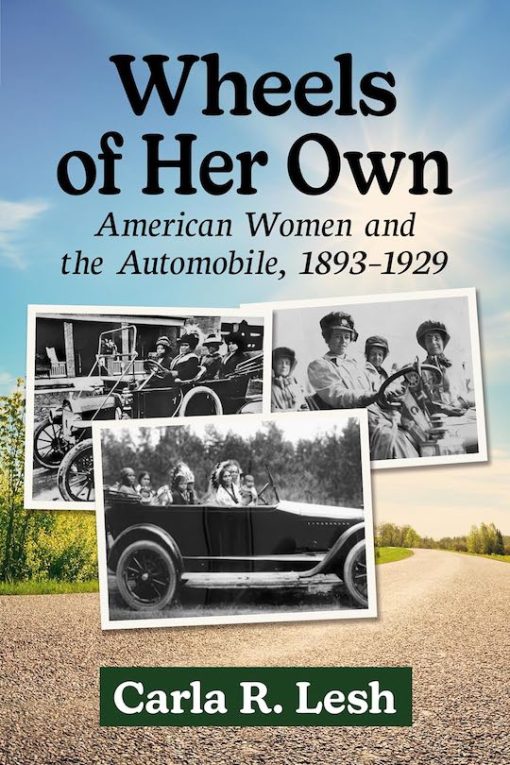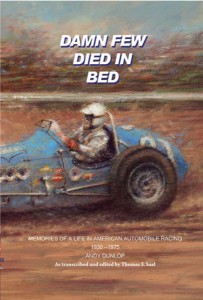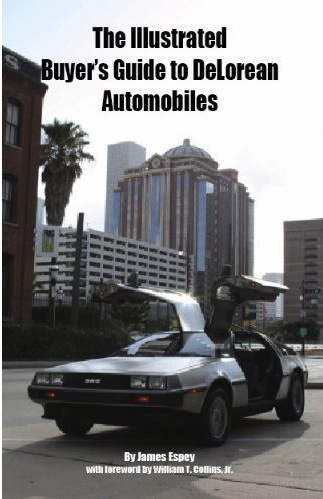Alvan Macauley of Packard: Detroit’s Forgotten Automotive Pioneer
by Charles E. Flinchbaugh

With “arm’s length distance” the passage of years provides, history does indeed look back on the life and accomplishments of one James Alvan Macauley (1872–1952) with kindness and respect. He was always known as Alvan Macauley for early on he dropped the James from his birth name. A 1982 citation issued by the Automotive Hall of Fame reads he “Provided leadership to the Packard Motor Company and served for 18 years as president of the Automobile Chamber of Commerce (aka the Automobile Manufacturers Association). He also assembled a team of 500 companies to produce war materials.” The latter had been as the head of The Automotive Council for War Production during World War II.
The attractively designed and generously illustrated landscape-format pages of this book immediately draw the reader’s attention. A glance at the two-page Table of Contents indicates one is about to be reading a chronological recounting from 1903 to 1952, essentially a year per chapter.

Indicative of all the pages of this book, layouts and graphics are genuinely attractive with, left, images of 1918–1919 models. On right, pages from the 1919 Twin-Six catalog.
Next, one discovers that author Charles Flinchbaugh has used an uncommon approach to telling his story as he reveals in his Introduction with, “the Annual Reports during [Alvan Macauley’s] tenure with Packard . . . interlaced with his . . . articles for Packard’s internal house organs (The Packard and The Packard Inner Circle) and public speeches” as well as minutes of executive board meetings and his annual letter to stockholders have been utilized—reproducing much of their content essentially verbatim.

Left page has catalog images of various models of 1930 Packards while facing page features photos of others.
There are some gems tucked away in all those reports. As examples, there was Macauley’s directive to Packard’s ad agency: “Never make an advertising statement that cannot be proved in a court of law.” After Macauley had been on the job nearly 20 years, the writer of an article described him as “lawyer, artist, mechanic, craftsman, and thinker.” Another wrote of him as “an incorrigible baseball addict” and of his “wood-working shop in the basement of his home” where “for his friends he carves cigarette cases, for his grandchildren toy furniture and dolls.” Another article reveals the beautiful, ornately carved and turned desk in his office at Packard was also his creation in that basement workshop.
Not intended as a criticism but since when have financial reports made for scintillating reading? That said, having those resource documents in the first place is a real boon, Just think how many companies (in any and all industries) never bothered to preserve documents much less see to it they eventually became accessible to researchers housed in libraries and other archives.

Text throughout reproduces, as this chapter title indicates, words from Board of Directors meetings and then-President Macauley’s letter to stockholders and other business documents.
So, while this book isn’t going to engage a reader as a page turner, it absolutely contains history important to the Packard enthusiast as well as for those who seek to understand more fully how the automotive business functioned during the era 1910 to 1948 during Macauley’s 38 years of service at Packard. He’d first been hired as General Manager, quickly been named a vice-president and General Manager. Five years on he was named company president and later also Chairman of the Board.
Only one other book in my not inconsiderable library takes a similar approach. Similar is, however, the operative word for Bob Ebert doesn’t reproduce those legal proceedings of a company but rather summarizes them in his own words. Thus where an original doc might be several pages long, Ebert presents the highlights in order to carry forward his book’s narrative. There’s an ironic twist for Ebert’s book also concerns Packard history taking up the story several years after Alvan Macauley’s death during the time when Packard had become intermingled with Studebaker and Mercedes-Benz.

Aviation, or rather the engines that put several aircraft aloft, were Packard-produced. That aspect of Packard’s story during the Macauley years is covered as well.
Should you desire to learn a bit of Alvan Macauley’s personality and family, there is a 91-page article written by Stuart Blond (the author of the two-volume biography of another influential but little known auto industry executive, James Nance, also previously reviewed). It was published in three parts in The Packard Cormorant, the Packard Club’s magazine. A limited number of copies of each issue are available for purchase. Back issues #189, 191 and 192 may be acquired in the US for $8 each by sending your check or money order (payable to The Packard Club) to Drusilla Carter, 13 Falknor Drive, Manchester, Connecticut 06040.
This particular book, Alvan Macauley of Packard, Detroit’s Forgotten Automotive Pioneer, is well-worth the time and attention you’ll invest in its careful reading. Yes, you’ll find a few typos and some extra words left behind during proofreading and editing. But none of them detract from its significant and real contribution to growing the body of knowledge.
Copyright 2024 Helen V Hutchings (speedreaders.info)


 RSS Feed - Comments
RSS Feed - Comments






































































 Phone / Mail / Email
Phone / Mail / Email RSS Feed
RSS Feed Facebook
Facebook Twitter
Twitter